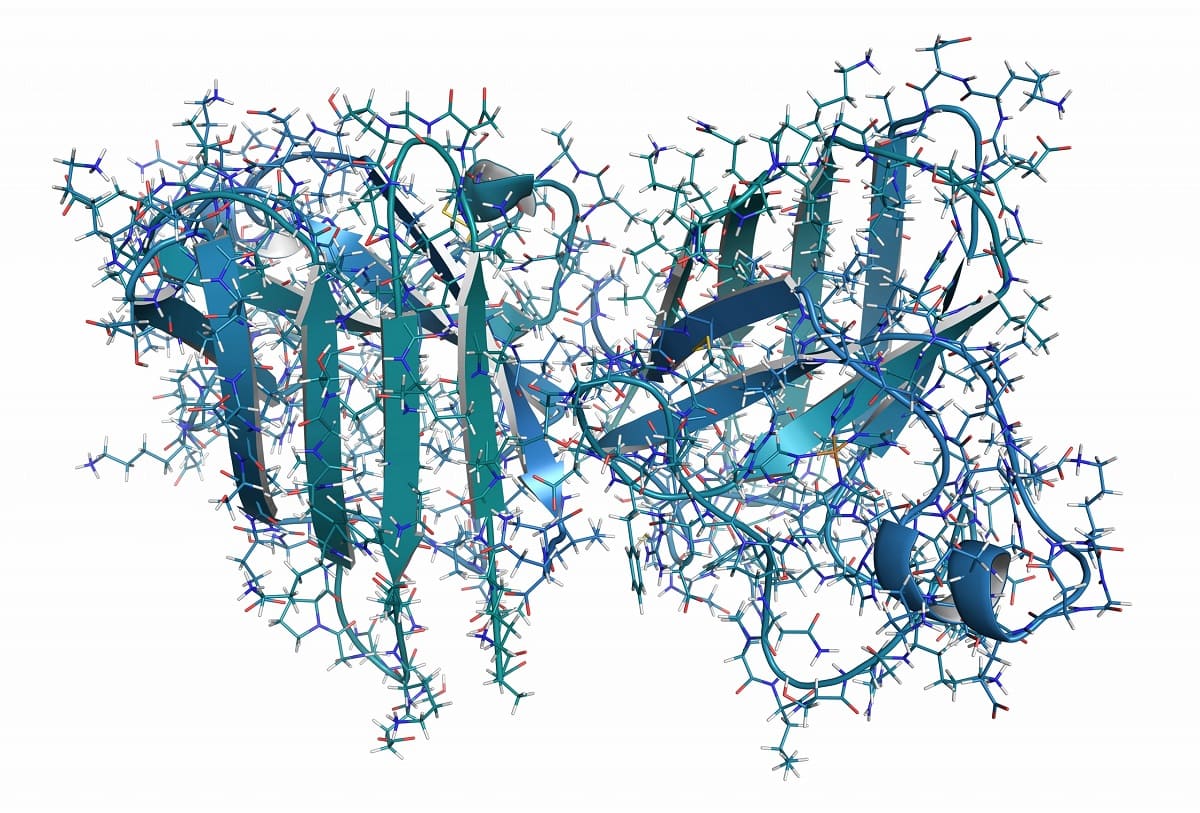Home>Health & Nutrition>Understanding Fever: Causes And Symptoms


Health & Nutrition
Understanding Fever: Causes And Symptoms
Modified: April 28, 2024
Learn about the causes and symptoms of fever in this comprehensive guide. Stay informed about your health and nutrition.
(Many of the links in this article redirect to a specific reviewed product. Your purchase of these products through affiliate links helps to generate commission for Temperatures.com, at no extra cost. Learn more)
Table of Contents
Introduction
Fever is a natural and essential defense mechanism of the human body. It is often a sign that the body is fighting an infection or illness. Understanding the causes and symptoms of fever is crucial for recognizing when medical attention may be necessary and for implementing appropriate treatment measures.
When the body detects the presence of harmful pathogens, such as bacteria or viruses, it responds by increasing its core temperature. This elevation in body temperature is known as fever. While it may be uncomfortable, fever is a vital response that helps the body combat infections. By creating an inhospitable environment for pathogens, fever assists the immune system in neutralizing and eliminating the invaders.
In this article, we will delve into the various causes of fever, ranging from common infections to less frequent underlying conditions. Additionally, we will explore the symptoms associated with fever, providing insight into when it may be necessary to seek medical attention. Furthermore, we will discuss the available treatment options for managing fever and its associated discomfort.
By gaining a deeper understanding of fever and its implications, individuals can make informed decisions regarding their health and well-being. This knowledge empowers individuals to recognize when fever may be a sign of a more serious health issue and to take appropriate steps to address it. Understanding fever is an essential aspect of maintaining overall health and ensuring prompt and effective medical intervention when necessary.
The Body's Response to Infection
When the body is invaded by harmful pathogens, such as bacteria or viruses, it initiates a complex and coordinated response to defend itself. The immune system, a network of cells, tissues, and organs, plays a pivotal role in recognizing and neutralizing these invaders. One of the primary mechanisms employed by the body in this defense is the induction of fever.
Upon detecting the presence of pathogens, the immune system releases signaling molecules called pyrogens. These pyrogens act on the hypothalamus, the region of the brain responsible for regulating body temperature. The hypothalamus responds by increasing the body's core temperature, leading to the manifestation of fever.
The elevation in body temperature serves several crucial purposes in combating infections. Firstly, it creates an environment that is less hospitable for the growth and reproduction of many pathogens. This inhibits the spread and proliferation of the invading microorganisms, thereby impeding the progression of the infection.
Furthermore, fever stimulates the production and activity of immune cells, enhancing the body's defense mechanisms. Certain immune cells, such as white blood cells, function more effectively at higher temperatures, enabling them to more efficiently target and eliminate pathogens. Additionally, fever promotes the release of cytokines, which are signaling molecules that coordinate the immune response and contribute to the resolution of the infection.
While fever is often accompanied by discomfort and malaise, it is important to recognize its role as a beneficial response to infection. By inducing fever, the body mobilizes its defenses to combat the invading pathogens, ultimately aiding in the resolution of the infection.
Understanding the body's response to infection sheds light on the intricate mechanisms that safeguard our health. It underscores the remarkable adaptability and resilience of the human body in the face of microbial threats. By appreciating the significance of fever as a fundamental component of the immune response, individuals can gain a deeper insight into the body's innate ability to protect itself from harm.
Common Causes of Fever
Fever can arise from a wide array of common infections and illnesses. Understanding these prevalent causes is essential for recognizing and addressing fever effectively. Some of the most frequent culprits behind fever include:
-
Viral Infections: Viruses such as the flu, common cold, and COVID-19 are notorious for triggering fever. These infections often manifest with additional symptoms such as cough, sore throat, and body aches.
-
Bacterial Infections: Bacterial infections, including strep throat, urinary tract infections, and certain types of pneumonia, can lead to fever. Identifying the specific bacterial source is crucial for targeted treatment.
-
Respiratory Infections: Conditions affecting the respiratory system, such as bronchitis and sinusitis, commonly induce fever. Inflammation and infection within the respiratory tract contribute to elevated body temperature.
-
Gastrointestinal Infections: Infections caused by bacteria, parasites, or viruses in the gastrointestinal tract can result in fever, often accompanied by symptoms like diarrhea, nausea, and abdominal pain.
-
Ear Infections: Otitis media, an infection of the middle ear, is a prevalent cause of fever in children. Ear pain, irritability, and difficulty sleeping are common accompanying signs.
-
Urinary Tract Infections (UTIs): UTIs, particularly in women, frequently present with fever as the body responds to the bacterial invasion in the urinary system.
-
Dental Infections: Abscesses or infections in the teeth or gums can lead to localized inflammation and fever. Prompt dental care is essential to address these issues effectively.
-
Vaccination Reactions: Some individuals may experience low-grade fever as a response to certain vaccinations. This is often a transient and mild reaction to the immunization process.
-
Inflammatory Conditions: Inflammatory disorders such as rheumatoid arthritis and inflammatory bowel disease can be associated with recurrent or persistent low-grade fevers as part of their symptomatology.
-
Heat Exhaustion or Heat Stroke: Exposure to high temperatures without adequate hydration can lead to heat-related illnesses, including fever, as the body struggles to regulate its temperature.
Understanding these common causes of fever enables individuals to assess their symptoms and seek appropriate medical attention when necessary. While fever is a natural response to infection, persistent or high fevers, especially in combination with other concerning symptoms, warrant medical evaluation to identify and address the underlying cause effectively.
Less Common Causes of Fever
While many fevers are attributed to common infections and illnesses, there are several less frequent underlying conditions that can also lead to elevated body temperature. Understanding these less common causes is crucial for recognizing when fever may be indicative of a more unusual or serious health issue.
-
Autoimmune Disorders: Certain autoimmune conditions, such as lupus and vasculitis, can provoke fever as a result of the immune system's aberrant response, leading to inflammation and tissue damage.
-
Cancers: Fevers can be a manifestation of certain types of cancer, particularly lymphomas and leukemias. The body's immune response to cancer cells or the release of inflammatory substances by the tumor can contribute to fever.
-
Thyroid Disorders: Dysfunction of the thyroid gland, including conditions such as thyroiditis or thyroid storm, can disrupt the body's temperature regulation, resulting in fever.
-
Deep Vein Thrombosis (DVT): In some cases, blood clots in the deep veins, often in the legs, can cause fever as a result of the body's response to the clot and the associated inflammation.
-
Drug Reactions: Adverse reactions to medications, particularly certain antibiotics, anticonvulsants, and anti-inflammatory drugs, can lead to fever as part of a broader spectrum of symptoms.
-
Inflammatory Bowel Disease (IBD): Crohn's disease and ulcerative colitis, both forms of IBD, can be accompanied by fever, often as a consequence of the body's inflammatory response to the gastrointestinal tract's chronic inflammation.
-
Endocrine Disorders: Disorders affecting the endocrine system, such as adrenal insufficiency or pheochromocytoma, can disrupt the body's hormonal balance, potentially resulting in fever.
-
Neurological Conditions: Certain neurological disorders, including meningitis and encephalitis, can present with fever as a prominent symptom, reflecting the body's response to the inflammation of the brain or its surrounding tissues.
-
Environmental Exposures: Exposure to toxins, heavy metals, or certain environmental hazards can lead to fever as the body attempts to detoxify and eliminate the harmful substances.
-
Rare Infections: Uncommon infectious diseases, such as Q fever, brucellosis, and certain tropical diseases, can provoke fever and may require specialized diagnostic approaches for accurate identification.
Recognizing the less common causes of fever underscores the importance of thorough medical evaluation when persistent or unexplained fevers arise. While these conditions may be less prevalent, they can have significant implications for an individual's health and well-being. By being aware of these potential underlying factors, individuals can advocate for comprehensive assessments and targeted interventions to address the root causes of fever effectively.
Symptoms of Fever
When the body's temperature rises in response to an infection or illness, it often manifests with a range of symptoms that can vary in intensity and duration. Understanding these symptoms is crucial for recognizing fever and its associated effects on the body. Common symptoms of fever include:
-
Elevated Body Temperature: The hallmark symptom of fever is an increase in body temperature above the normal range of 98.6°F (37°C). While the degree of elevation can vary, fevers are generally categorized as low-grade (100.4–102.2°F or 38–39°C), moderate (102.2–104°F or 39–40°C), or high (above 104°F or 40°C).
-
Chills and Shivering: As the body attempts to reach the elevated set point, individuals may experience chills and shivering as a result of the temperature differential between the body and the new set point.
-
Sweating: Once the body reaches the new elevated temperature, sweating may occur as a means of dissipating heat and aiding in temperature regulation.
-
Headache: Many individuals with fever report experiencing headaches, which can range from mild discomfort to more severe and persistent pain.
-
Muscle Aches: Fever is often accompanied by generalized muscle aches and body pains, contributing to feelings of fatigue and malaise.
-
Fatigue and Weakness: Fever can lead to increased feelings of fatigue and weakness, impacting energy levels and overall well-being.
-
Loss of Appetite: Many individuals with fever experience a diminished appetite, often due to the body's focus on combating the underlying infection.
-
Irritability and Restlessness: Fever can lead to changes in mood and behavior, with individuals feeling irritable, restless, or generally uncomfortable.
-
Dehydration: Elevated body temperature and sweating can contribute to fluid loss, potentially leading to dehydration if adequate fluids are not consumed.
-
Rapid Heart Rate and Breathing: In some cases, fever can lead to an increased heart rate and respiratory rate as the body works to maintain homeostasis.
It is important to note that while fever itself is a natural and beneficial response to infection, certain symptoms may indicate a need for medical evaluation. For instance, persistent high fever, severe headaches, difficulty breathing, confusion, or signs of dehydration warrant prompt medical attention. Additionally, in infants and young children, fever accompanied by lethargy, persistent crying, or refusal to eat or drink should be promptly assessed by a healthcare professional.
By recognizing the symptoms associated with fever, individuals can take appropriate measures to manage their discomfort and seek medical guidance when necessary. Understanding the nuanced manifestations of fever empowers individuals to make informed decisions regarding their health and well-being, ensuring timely intervention when symptoms warrant medical attention.
When to Seek Medical Attention
Recognizing when to seek medical attention for fever is crucial for ensuring timely intervention and appropriate management of underlying health concerns. While fever is often a natural response to infections and illnesses, certain circumstances warrant prompt evaluation by a healthcare professional.
Infants and Young Children
In infants and young children, fever can be a cause for concern, particularly if accompanied by other symptoms. Parents and caregivers should seek medical attention if a fever is present in a child under three months of age, regardless of the degree of temperature elevation. For infants and children, especially if they appear lethargic, irritable, or refuse to eat or drink, prompt medical assessment is essential to rule out serious underlying conditions.
Persistent High Fever
Fevers that persist for an extended period or are consistently high in temperature merit medical evaluation. While low-grade fevers are often manageable at home, persistent fevers above 102.2°F (39°C) or fevers that do not resolve within a few days should prompt a visit to a healthcare provider. Additionally, if fever is accompanied by severe headaches, neck stiffness, or confusion, it may indicate a more serious underlying issue that requires medical attention.
Underlying Health Conditions
Individuals with pre-existing health conditions, compromised immune systems, or chronic illnesses should be vigilant when experiencing fever. For those undergoing cancer treatment, individuals with HIV/AIDS, or those with autoimmune disorders, any fever should prompt consultation with a healthcare professional. Fever in these populations can signify potentially severe complications that require specialized medical management.
Read more: Understanding The Symptoms Of Fever
Suspected Infections
When fever is accompanied by symptoms suggestive of specific infections, such as urinary tract symptoms, severe cough, or localized pain and inflammation, medical assessment is advisable. Identifying the underlying cause of the fever is crucial for targeted treatment and resolution of the infection. Additionally, if fever occurs after recent travel to regions with endemic diseases or following exposure to individuals with known contagious illnesses, seeking medical attention is prudent to rule out infectious diseases that may require specific interventions.
Altered Vital Signs
Significant changes in vital signs accompanying fever, such as rapid heart rate, difficulty breathing, or pronounced dehydration, warrant immediate medical evaluation. These signs may indicate systemic complications that require prompt intervention to prevent further deterioration of health.
By recognizing these indicators, individuals can make informed decisions regarding when to seek medical attention for fever. Prompt assessment and appropriate management of fever contribute to timely identification and treatment of underlying health issues, ultimately promoting optimal health and well-being.
Treatment Options for Fever
When it comes to managing fever, the primary focus is on alleviating discomfort, supporting the body's natural healing processes, and addressing any underlying causes contributing to the elevated body temperature. Several treatment options are available to help individuals cope with fever and its associated symptoms.
Hydration
Maintaining adequate hydration is essential when experiencing fever. Elevated body temperature and sweating can lead to increased fluid loss, potentially resulting in dehydration. Consuming water, electrolyte-rich beverages, and clear broths can help replenish lost fluids and support the body's efforts to regulate its temperature.
Rest
Rest is a fundamental aspect of fever management. Allowing the body ample time to recuperate and heal is crucial during periods of illness. Adequate rest supports the immune system's function and aids in the body's recovery from the underlying infection or condition contributing to the fever.
Temperature Regulation
Employing measures to regulate body temperature can help alleviate discomfort associated with fever. Using a cool, damp cloth on the forehead, taking a lukewarm bath, or using a fan to circulate air can assist in reducing body temperature and providing relief from symptoms such as chills and sweating.
Over-the-Counter Medications
Over-the-counter medications such as acetaminophen (Tylenol) and ibuprofen (Advil, Motrin) can be used to help lower fever and alleviate associated discomfort. It is important to follow the recommended dosages and guidelines for these medications, especially when considering their use in children or individuals with pre-existing health conditions.
Medical Evaluation and Treatment
In cases where fever persists, is accompanied by severe symptoms, or is indicative of an underlying health issue, seeking medical evaluation is crucial. Healthcare professionals can conduct thorough assessments to identify the cause of the fever and recommend targeted treatment strategies. For fevers resulting from bacterial infections, appropriate antibiotic therapy may be prescribed to address the underlying cause.
Addressing Underlying Causes
Effective management of fever often involves addressing the underlying conditions contributing to the elevated body temperature. This may include targeted treatment for specific infections, management of chronic health conditions, or adjustments to medications that may be triggering fever as a side effect.
By implementing these treatment options, individuals can effectively manage fever and its associated symptoms while addressing any underlying health concerns. It is important to approach fever management with a focus on holistic well-being, supporting the body's natural healing processes, and seeking appropriate medical guidance when necessary.
Conclusion
In conclusion, fever serves as a vital defense mechanism of the human body, playing a crucial role in combating infections and illnesses. Understanding the diverse causes and symptoms of fever is essential for individuals to recognize when medical attention may be necessary and to implement appropriate treatment measures. From common infections to less frequent underlying conditions, the spectrum of factors contributing to fever underscores the complexity of the body's response to pathogens and other health challenges.
By gaining insight into the body's response to infection, individuals can appreciate the remarkable adaptability and resilience of the human body. The intricate mechanisms that underpin fever as a fundamental component of the immune response highlight the body's innate ability to protect itself from harm. This understanding empowers individuals to make informed decisions regarding their health and well-being, ensuring prompt and effective medical intervention when necessary.
Recognizing the symptoms associated with fever enables individuals to take appropriate measures to manage their discomfort and seek medical guidance when necessary. From elevated body temperature and chills to muscle aches and fatigue, understanding the nuanced manifestations of fever allows for timely intervention and targeted treatment. Moreover, recognizing when to seek medical attention for fever is crucial for ensuring prompt evaluation and appropriate management of underlying health concerns, particularly in vulnerable populations such as infants, young children, and individuals with pre-existing health conditions.
In managing fever, a holistic approach that encompasses hydration, rest, temperature regulation, and, when necessary, over-the-counter medications and medical evaluation, is essential. By addressing the underlying causes of fever and supporting the body's natural healing processes, individuals can effectively navigate periods of illness and promote optimal health and well-being.
Ultimately, the comprehensive understanding of fever and its implications equips individuals to make informed decisions regarding their health. By recognizing the significance of fever as a natural and beneficial response to infection, individuals can take proactive steps to address their symptoms and seek appropriate medical attention when necessary. This knowledge serves as a cornerstone of proactive healthcare management, contributing to overall well-being and resilience in the face of health challenges.











